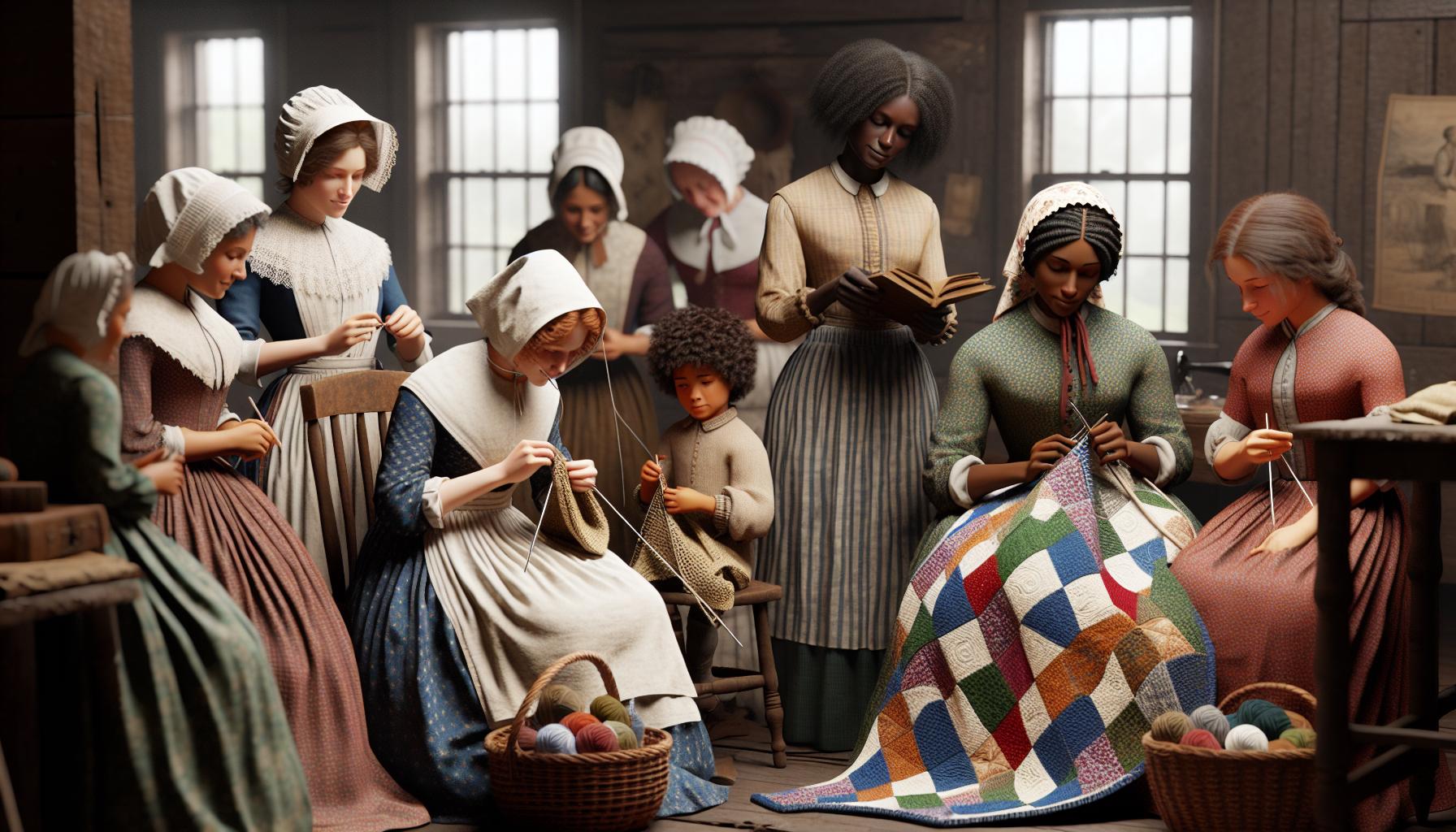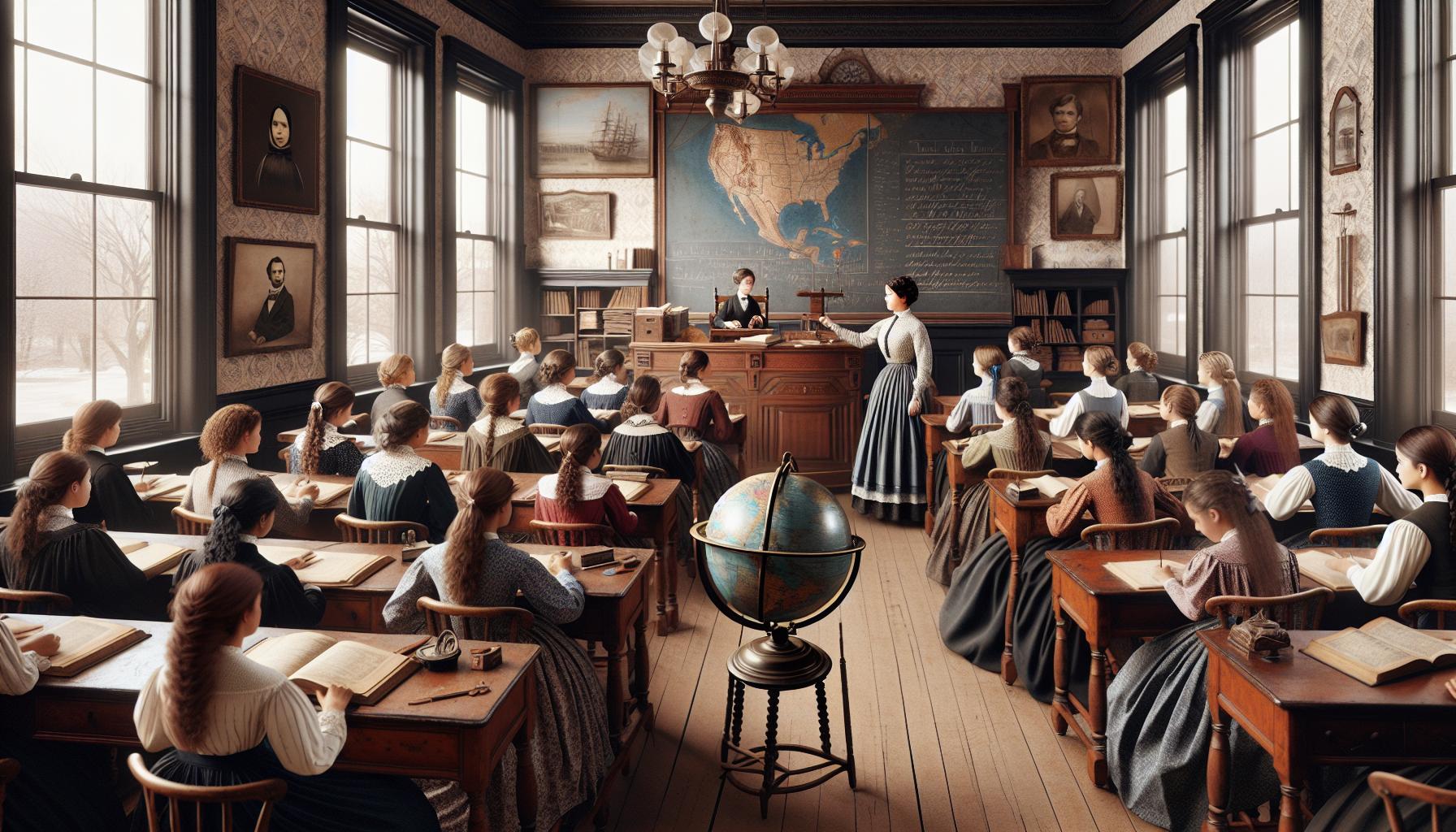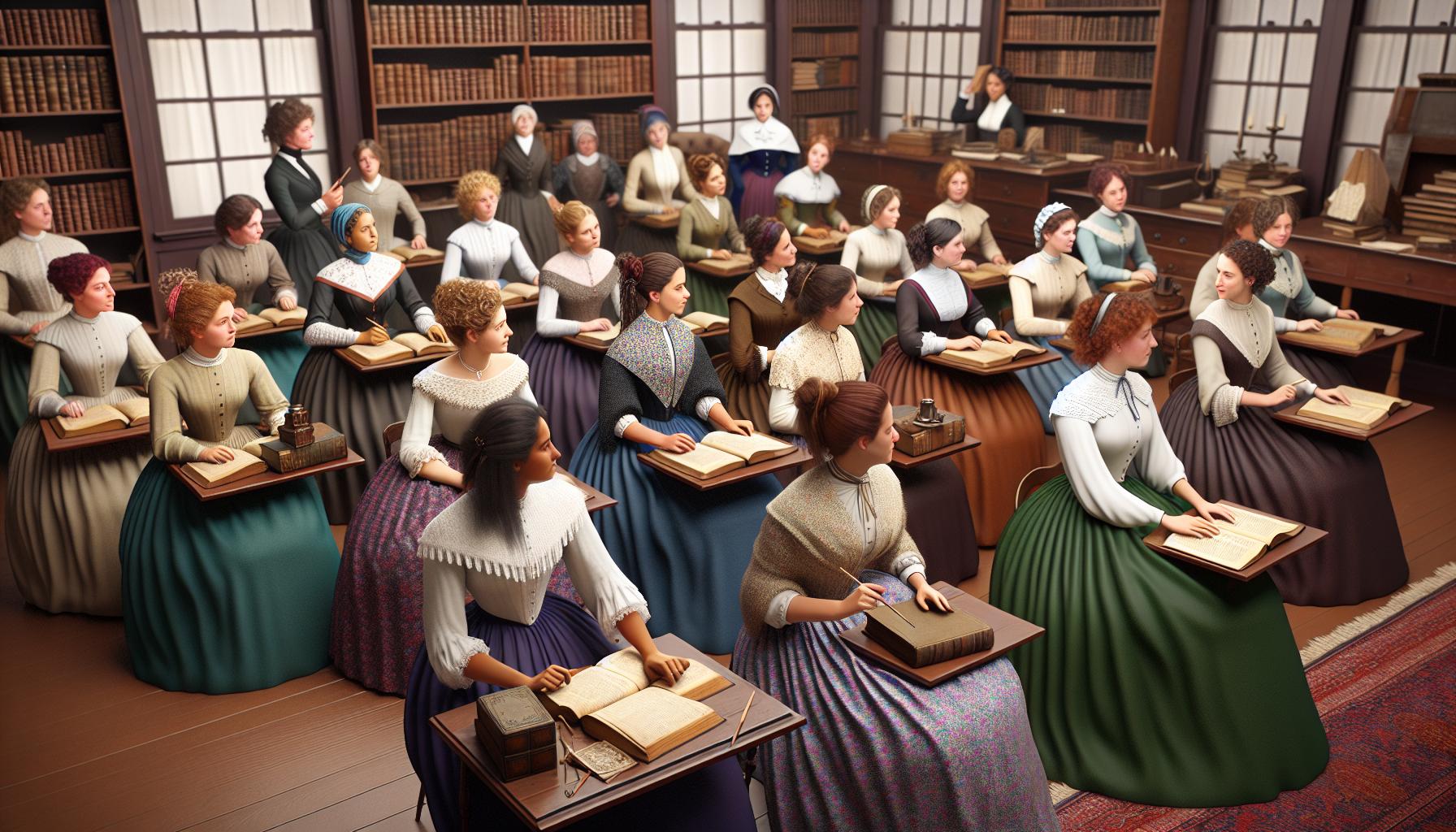In the early 1800s, society’s view on women and education was deeply rooted in tradition and gender roles. Many believed a woman’s place was in the home, focusing on domestic duties rather than pursuing formal education. This mindset limited opportunities for women and reinforced the idea that their primary purpose was to be wives and mothers.
However, a subtle shift began to emerge as some women and advocates started to challenge these norms. They argued that education was essential for women, not just for personal growth but also for contributing to society. This tension between established beliefs and emerging ideas set the stage for a gradual transformation in women’s access to education, ultimately paving the way for future generations.
Key Takeaways
- Women’s education in the early 1800s was primarily limited to domestic roles, with formal education often relegated to skills for home management.
- The prevailing belief positioned women primarily as wives and mothers, leading to a lack of access to critical subjects like mathematics and science.
- Reformers such as Emma Willard and Mary Lyon played a crucial role in advocating for women’s educational opportunities, promoting broader curricula beyond traditional domestic skills.
- Despite societal resistance, a gradual shift occurred as advocates challenged the notion that women were unintelligent or unworthy of advanced education.
- The women’s rights movement significantly influenced perceptions of women’s education, emphasizing its importance for personal growth and societal contribution.
- Early efforts to expand women’s education laid the foundation for future advancements in women’s rights and greater access to educational opportunities.
Which Statement Best Describes Society’s View on Women And Education in The Early 1800s?
In the early 1800s, societal views on women’s education emphasized domesticity and subservience. Traditional beliefs positioned women primarily as wives and mothers, confining educational opportunities to skills deemed appropriate for home management. Access to formal education remained limited for most women. Many affluent families endorsed the education of their daughters, but the focus centered on subjects like literature and art rather than critical thinking or preparation for careers.
Emerging advocates and reformers challenged these restrictive norms. They argued that education benefited women beyond household duties. Figures such as Emma Willard and Mary Lyon began promoting broader educational curricula, including math and science. Their efforts contributed to the establishment of women’s seminaries and colleges during this period, slowly opening doors for higher education.
The tension between established beliefs and emerging demands for women’s education sparked a gradual transformation. Although significant barriers persisted, these early advocates laid a crucial foundation for future advancements in women’s rights and educational access. The period served as a pivotal moment in the evolution of societal views surrounding women’s education, setting the stage for continued progress in subsequent decades.
Societal Norms and Expectations

Society in the early 1800s maintained strict norms and expectations regarding women’s roles, especially in education. These views constrained women primarily to domestic responsibilities, limiting their access to formal education.
Gender Roles in the 19th Century
Gender roles in the 19th century dictated that women focus on home and family. Education often emphasized skills deemed essential for managing a household, such as sewing, cooking, and basic literacy. Affluent families occasionally provided more advanced subjects like music and art, yet critical thinking and professional skills remained absent. Women who sought knowledge outside this framework faced resistance from a society that viewed their primary purpose as nurturing rather than learning.
Perceptions of Women’s Intelligence
Perceptions of women’s intelligence during this era reflected widespread societal beliefs that women were less capable than men. Intellectual pursuits were generally deemed inappropriate for women, reinforcing the notion that education beyond domestic skills lacked value. Even the advocates for women’s education faced skepticism. Yet, as early reformers such as Emma Willard and Mary Lyon emerged, arguments for women’s intellectual capabilities gained traction, challenging the prevailing beliefs and nurturing a gradual shift towards greater educational opportunities.
Educational Opportunities for Women

The early 1800s presented limited educational opportunities for women, largely constrained by societal norms that prioritized domestic roles. However, certain factors began to shift these perceptions.
Access to Formal Education
Access to formal education for women during the early 1800s remained minimal. Most women received education at home, focusing on subjects that prepared them for domestic life, such as sewing, cooking, and household management. Some affluent families allowed their daughters to study literature and the arts, but subjects like mathematics and science were rarely part of their curriculum. The few existing academies for girls often emphasized a narrow range of skills deemed appropriate for women, reinforcing the idea that education served primarily to enhance marital prospects rather than personal development or career preparation.
Influence of the Women’s Rights Movement
The women’s rights movement emerged as a significant influence on women’s educational opportunities during this period. Reformers like Emma Willard and Mary Lyon advocated for expanded curricula, emphasizing the value of subjects such as mathematics and science. Their efforts inspired many women to pursue education beyond traditional domestic training. They organized schools and opened institutions specifically designed for women’s education, gradually challenging the prevailing belief that women lacked the intellectual capacity for advanced studies. This movement laid the groundwork for future progress, highlighting the necessity of educational access for women and setting the stage for broader societal changes in attitudes towards women and education.
Responses to Changes in Education

Society’s responses to the evolving view of women’s education in the early 1800s varied widely, resulting in both strong opposition and notable support.
Opposition to Women’s Education
Opposition to women’s education stemmed from traditional beliefs about gender roles. Many viewed education for women as unnecessary, arguing that their primary focus should remain on domestic responsibilities. Critics believed that intellectual pursuits could distract women from their roles as wives and mothers. Furthermore, significant skepticism surrounded women’s capability to grasp complex subjects, reinforcing the idea that advanced education was inappropriate. Many prominent figures spoke against coeducation, claiming it could undermine societal stability. These views, echoed by educational institutions, often led to restricted access for women, narrowing their opportunities to pursue academic endeavors.
Support for Women’s Education
Support for women’s education arose from a growing recognition of its importance for societal advancement. Reformers like Emma Willard and Mary Lyon championed expanded curricula for women. They believed education should encompass subjects like math and science, fostering intellectual development and preparing women for greater roles in society. Advocates argued that educated women could contribute meaningfully both at home and in the broader community. The establishment of institutions aimed specifically at women’s education reflected this burgeoning support. As more women began pursuing higher education, a shift in societal attitudes slowly emerged, laying the foundation for future changes. Their efforts highlighted education’s value in promoting personal growth and civic engagement for women.
Pivotal Time For Women’s Education
The early 1800s were a pivotal time for women’s education. Society largely viewed women’s roles as confined to the home with education limited to domestic skills. However, the efforts of early reformers sparked a change in perception. They recognized that education could empower women and benefit society as a whole.
As these advocates championed broader curricula, they began to challenge the notion that women were less capable than men. This shift laid the groundwork for future advancements in women’s education. It’s clear that while the journey was slow and met with resistance, the seeds of change were planted, ultimately leading to greater opportunities for women in education and beyond.
